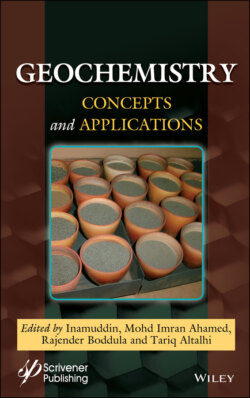Читать книгу Geochemistry - Группа авторов - Страница 20
1.4 Human Health Risks and Their Mitigation 1.4.1 Health Risks 1.4.1.1 Chrysotile Asbestos
ОглавлениеThe human health risks of chrysotile asbestos are the most documented among the three groups of toxic contaminants occurring in serpentinitic geological systems. Chrysotile is considered as a carcinogen and has been linked to incidences of human health conditions. High incidences of asbestosis, lung and ovarian cancers, and mesothelioma have been associated with chrysotile asbestos [4, 38]. Specifically, increased incidences of cancer in human populations inhabiting serpentinitic geological environments have been reported in Calabria in Southern Italy) [21, 22]. The toxicity mechanisms and carcinogenicity of chrysotile are quite complex and depends on the physico-chemical properties of the chrysotile [64, 65]. The toxicity mechanisms include (1) breakage of the deoxyribonucleic acid or gene structure and (2) the generation of highly reactive oxygen radicals that cause severe oxidative stress [4, 66].
Controversy and misconceptions exist with respect to the toxicity of chrysotile asbestos. Some studies suggest that chrysotile is less biopersistent, thus less toxic and safer than other types of asbestos such as amphiboles [67–69]. These sentiments are largely driven by sectoral interests, and are meant to promote the production and use of asbestos [4]. For example, one of the studies claiming that chrysotile is non-toxic was funded by the Asbestos Institute, Montréal, Canada, and the Government of Québec, raising potential conflict of interest [70]. Moreover, a series of studies by Bernstein and co-workers were conducted for short exposure periods (i.e., 1 year) [67, 70, 71]. Such periods are far lower than the latent period of 40 years required between time of exposure and expression of human health outcomes [36]. In Zimbabwe, where large chrysotile deposits exist in Shabani-Mashava Mine in Zvishavane [72], the Minerals Marketing Corporation of Zimbabwe claim that “If inhaled, chrysotile or white asbestos is moved from the lung while the amphiboles persist. Therefore it is the blue asbestos, amphiboles that causes asbestosis, lung cancer etc., not chrysotile asbestos.” (http://www.mmcz.co.zw/products/industrial-minerals/). This claim is in total disregard of the evidence from Zimbabwe showing profound human health risks associated with exposure to chrysotile asbestos [4, 41, 42]. For example, Cullen and Baloyi [41] showed that several human health risks, including malignant mesothelioma, morbid asbestosis, non-malignant pleural disease, and lung cancer reported in other countries were also prevalent among workers in the chrysotile asbestos industry. The fact that chrysotile is carcinogenic just like amphibole asbestos is also shared by authoritative global health agencies, including the WHO and the International Agency for Research on Cancer [4, 73, 74]. The position of the WHO and International Agency for Research on Cancer is based on comprehensive reviews of recent literature comprising of about 100 studies.
